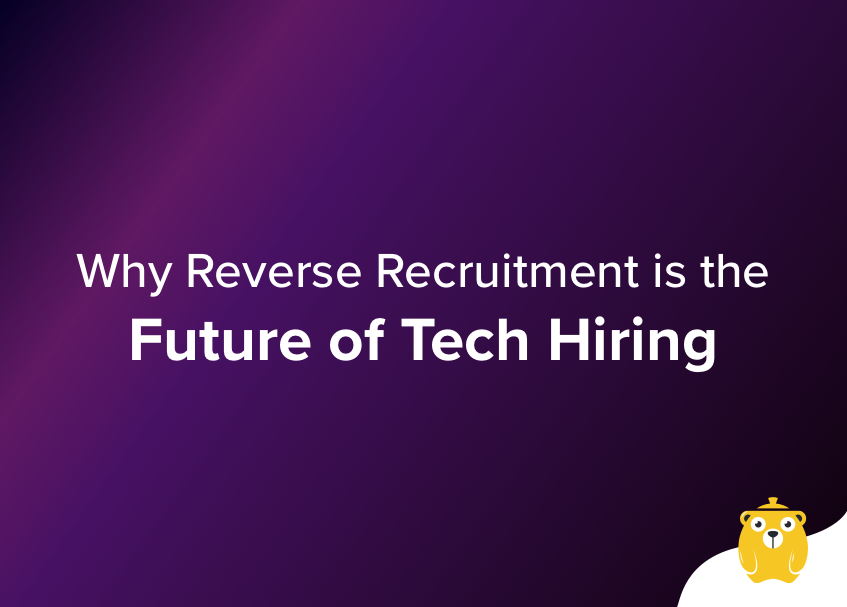Reassessing Employment: Leveraging Reverse Recruiting for Competitive Advantage
Reassessing Employment: Leveraging Reverse Recruiting for Competitive Advantage
Blog Article
Unlock the Power of Reverse Recruiting Approaches for Effective Talent Purchase
In the realm of talent purchase, the landscape is constantly progressing, with new techniques arising to meet the needs of an open market. Among these techniques, reverse recruiting stands out as a technique that flips the typical recruitment process on its head, putting the power in the hands of the prospects. By tempting top ability to seek out possibilities within your organization, reverse recruiting supplies a fresh method to bring in and keeping crucial employees. As firms strive to stay ahead in the talent game, unlocking the capacity of reverse recruiting approaches can be the trick to securing a strong and dynamic workforce.
Comprehending Reverse Hiring
Comprehending reverse recruiting is essential in navigating the developing landscape of talent acquisition methods. Unlike typical recruitment techniques where employers choose candidates, reverse recruiting involves the proactive method of candidates looking for possible companies. This paradigm shift puts candidates in the driver's seat, permitting them to select companies that align with their worths, career objectives, and work preferences.
In significance, reverse recruiting equips candidates to take control of their work search process by looking into companies, getting to out to recruiters or hiring supervisors straight, and showcasing their abilities and experiences. For companies, this method presents a distinct chance to bring in top talent that are genuinely interested in the firm and its goal, fostering an extra engaged and devoted workforce.
Advantages of Reverse Recruiting
Employing reverse recruiting approaches can produce substantial advantages for both prospects and employers in the skill acquisition procedure. For candidates, among the key benefits is the capacity to have more control and openness in the task search. By being approached by companies that have already recognized them as prospective fits for their company, candidates can really feel more valued and demanded. reverse recruiting. This can result in enhanced work complete satisfaction and a greater probability of approving a deal from a company that actively sought them out.
On the other hand, employers can profit from reverse recruiting by accessing to a pool of passive prospects that may not be proactively seeking new possibilities. This permits companies to target individuals with particular capability or experiences that align with their needs, potentially bring about higher top quality works with. In addition, reverse recruiting can assist business separate themselves in an affordable ability market by pop over to this web-site showcasing a positive and forward-thinking technique to recruitment. Eventually, the benefits of reverse recruiting reach both candidates and employers by improving the working with procedure and cultivating even more significant connections between both events.

Executing Reverse Hiring Methods
To properly integrate reverse recruiting techniques into a talent purchase strategy, organizations have to focus on proactive engagement with possible prospects. By showcasing the firm society, values, and profession advancement opportunities, companies can ignite the passion of potential prospects and build a skill pipe for future requirements.
Moreover, executing personalized interaction strategies can additionally improve the effectiveness of reverse recruiting. By constantly nurturing partnerships with top talent, companies can remain ahead in the affordable skill purchase landscape and safeguard the finest candidates for their group - reverse recruiting.
Leveraging Modern Technology in Reverse Recruiting
In the electronic age of skill acquisition, taking advantage of technological developments is extremely important for effective application of reverse recruiting strategies. Leveraging modern technology backwards recruiting supplies various advantages to improve the process and draw in top skill successfully. Applicant monitoring systems (ATS) play an important function in managing candidate data, tracking communications, and automating interaction, allowing employers to concentrate on building connections with potential hires.
Utilizing information analytics devices can assist employers measure the effectiveness of their reverse recruiting approaches, determine locations for improvement, and make data-driven choices to maximize the talent procurement process - reverse recruiting. By embracing innovation in reverse recruiting, companies can stay Read Full Article ahead in the affordable ability market and protected top talent effectively.
Determining Success backwards Recruiting
Having developed the foundational duty of technology in maximizing reverse recruiting strategies, the next essential action depends on effectively gauging the success of these innovative methods. In the world of reverse recruiting, typical metrics like time-to-fill and cost-per-hire might not fully capture the effect of these techniques. Rather, gauging success in reverse recruiting requires a more nuanced method navigate to these guys that concentrates on prospect interaction, company branding improvement, and lasting talent retention.
One key metric to consider is candidate experience. By collecting comments from candidates who have undergone the reverse recruiting process, organizations can get useful understandings right into locations for renovation and recognize toughness to take advantage of. In addition, tracking metrics associated with company brand name understanding, such as social media belief and Glassdoor evaluations, can supply a much more alternative view of exactly how reverse recruiting is shaping the company's reputation in the ability market.
Inevitably, success backwards recruiting must be determined not just by the effectiveness of filling roles yet additionally by the high quality of hires, their alignment with organizational culture, and their lasting efficiency within the business. By embracing a detailed method to measuring success, companies can absolutely open the potential of reverse recruiting strategies for effective skill acquisition.
Verdict

Report this page